Marblehead Light
Well, what can I say, really?
When summer comes, it sucks you in its whirlpool, — days, sensations and adventures flashing by faster and faster, and there is no time to write it down, — barely enough time to live, — and then you suddenly look around, and many months, or maybe even years have passed.
The trips about which I am going to tell you know took place last year and the year before that. But so what? Trips are like wine, they age in oak barrels of memory, and only get better and richer with time.
When a historian and an engineer write about a lighthouse, they list a bunch of facts — when was it build, what kind of optics were deployed, who were the keepers (a full list with dates), what were some notable shipwrecks in the lighthouse vicinity.
I am a sailor, not a historian. And while there are two and a half facts about each light which are actually important to us sailors — it’s height, light color and blinking pattern — the first thing we remember when a particular light is mentioned is not even that. It is the voyages we happened to undertake towards or past that particular lighthouse. What was the weather like. How the boat behaved herself. How the heart was beating.
As I begin the story of Marblehead Light, three of my trips immediately come to mind. I will start with a day sail in September two years ago with Sergey, Sonia and Koby.
The weather was sunny but cool that day, with fresh north-west breeze. We sailed out of Boston Harbor, around Deer Island Light, and then headed north-east along the coast.
I was standing on the bow and recalling the story of Captain Joshua Slocum, the first person to singlehandedly sail around the world. He also started his trip on cool sunny day, just in the spring (April 1895) rather then in the fall. And just like us he sailed his boat the Spray around Deer Island Light and headed north — in his case to the town of Gloucester. Here is how he described that day:
The wind freshened, and the Spray rounded Deer Island light at the rate of seven knots.
Passing it, she squared away direct for Gloucester to procure there some fishermen’s stores. Waves dancing joyously across Massachusetts Bay met her coming out of the harbor to dash them into myriads of sparkling gems that hung about her at every surge. The day was perfect, the sunlight clear and strong. Every particle of water thrown into the air became a gem, and the Spray, bounding ahead, snatched necklace after necklace from the sea, and as often threw them away. We have all seen miniature rainbows about a ship’s prow, but the Spray flung out a bow of her own that day, such as I had never seen before. Her good angel had embarked on the voyage; I so read it in the sea.
We have all seen miniature rainbows about a ship’s prow, says Slocum, — to say the truth, I had not have — but on that September day, standing on our boat’s bow, as each wave, hitting the bow, disintegrated into foam and spray, I finally saw them myself, the rainbow patches of spray in the cold rays of the autumn sun.
This is how, standing on the bow and pondering rainbows, Slocum and the nature of happiness, I saw Marblehead Light on that trip. Frankly, it was actually good that I saw it — we were sailing too far off shore and got confused by navigational buoys.
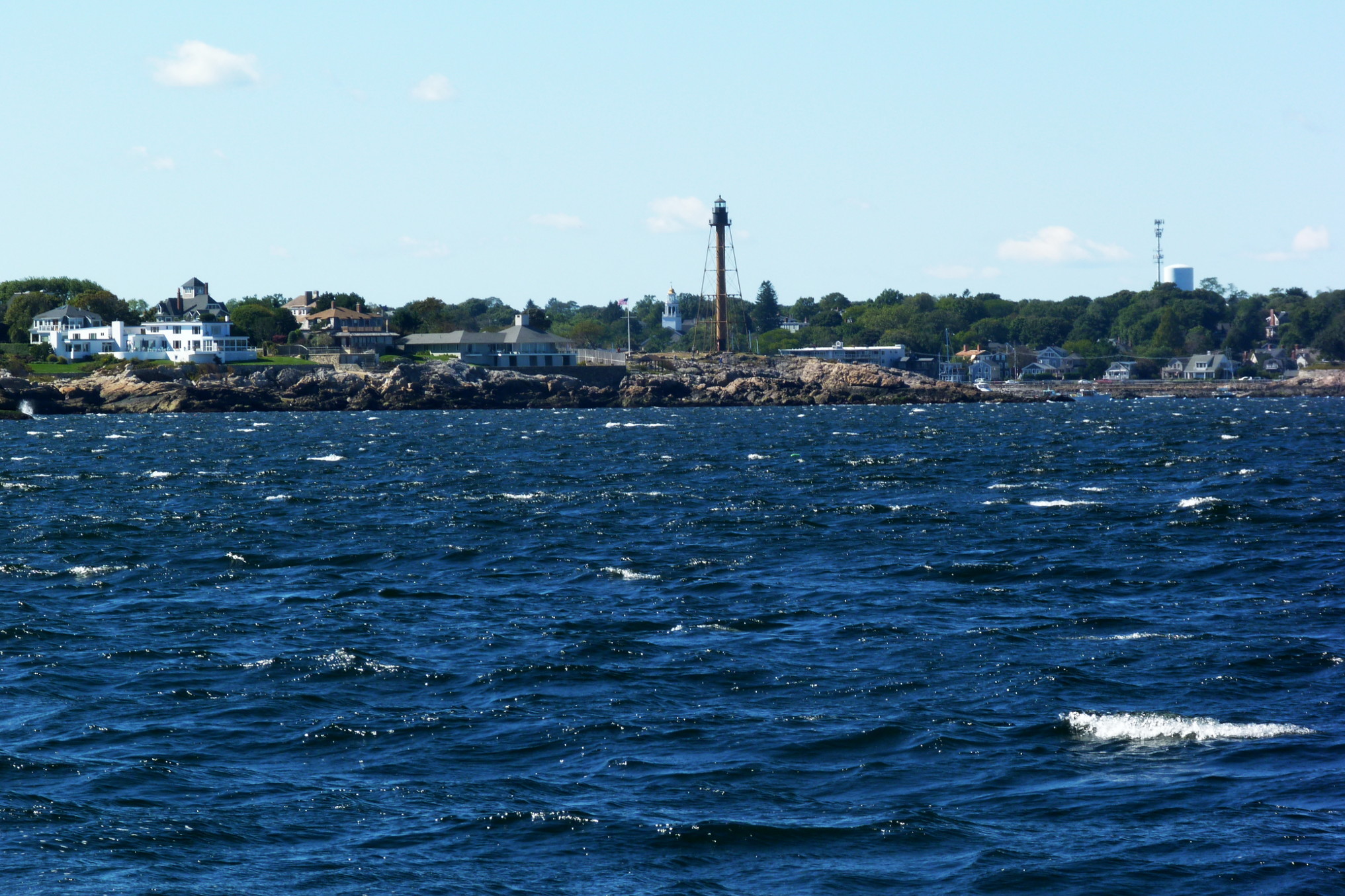
Marblehead Light sits on the very end of Marblehead Neck, and is, objectively speaking, a rather ugly looking cast-iron skeletal tower — that’s how the Coast Guard lovingly calls this particular style of architecture. Aesthetic quality is another lighthouse property rarely cited by a historian or an engineer, — but lighthouses are structures of great emotional importance, and we humans tend to care about the beauty of such objects, or lack thereof.
New England lighthouses tend to be strikingly beautiful or at least pleasing to the eye. That makes Marblehead Light to stand out. (In fact, there are numerous lighthouses of the same type in mid-Atlantic and in Florida, where they probably blend in better, — but no other in North-East.) The aesthetic situation is so bad that the famous Boston marine historian Edward Rowe Snow, even being a historian, could not avoid commenting on it:
Marblehead Light is located at the scene of the greatest sailing races in America. Unfortunately, the tall, spindlelike legs of the lighthouse do not fit the picturesque scenery. Of course, it is to be realized that lighthouses are fore utility and not for beauty, but in this case it is especially unfortunate that beauty and utility were not combined.
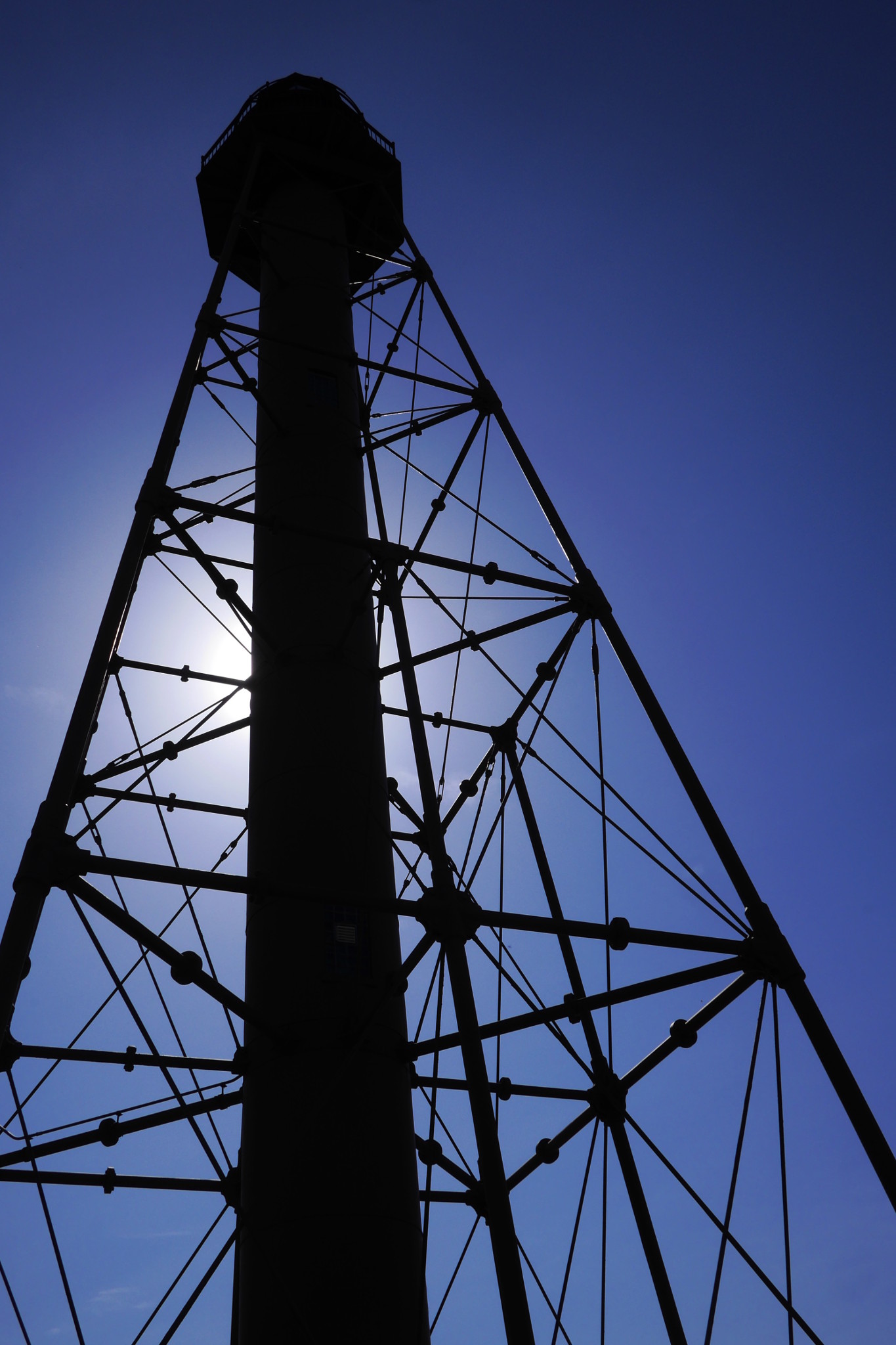
Perversely, the unusual ugliness of Marblehead Light — or perhaps just the lack of beauty, a very subtle distinction here — makes it interesting and memorable in its own right. One would definitely never confuse it with any other New England lighthouse.
Either way, to get to Marblehead Harbor we sailed around the tip of Marblehead Neck and had enough time to observe the lighthouse.
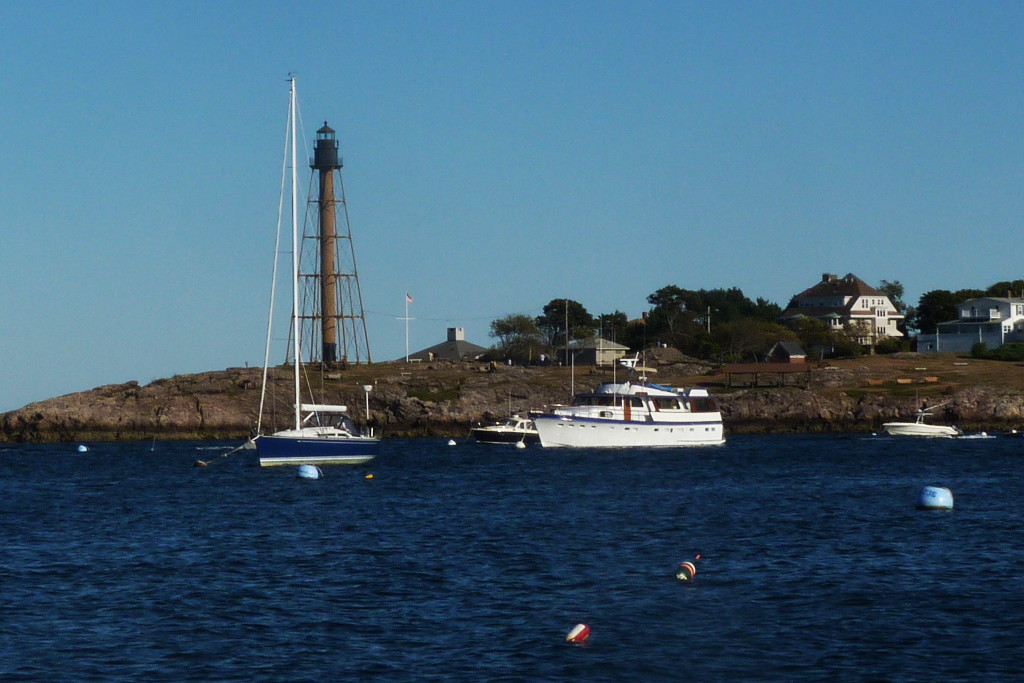
Marblehead Harbor is one of the top sailboat harbors in the US; a forest of masts is visible long time before one finds an entrance to the harbor.
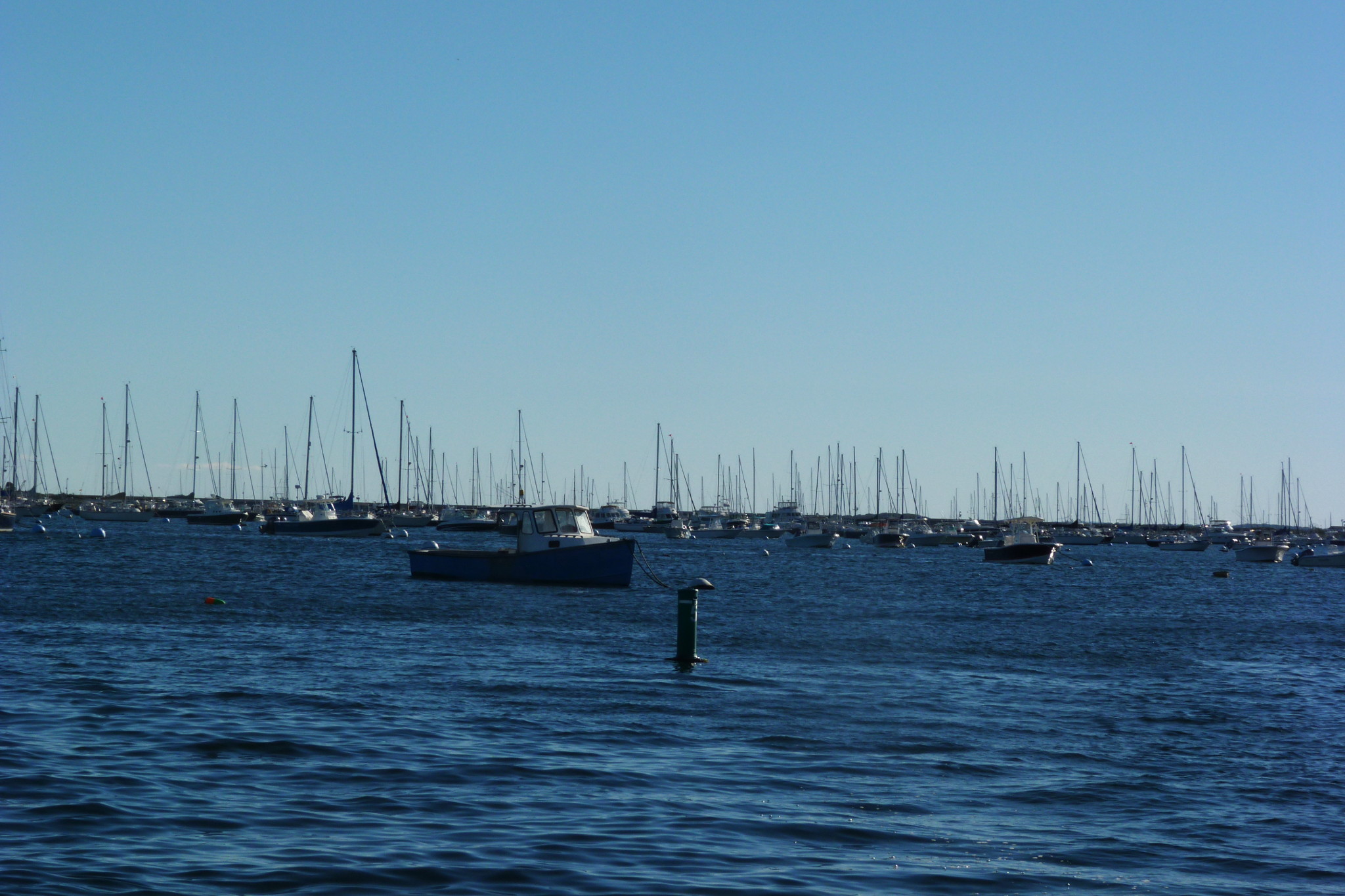
Once inside the harbor, we docked at the town dock and went for a walk. Koby took this photo of a part of the harbor and Marblehead Light across it:
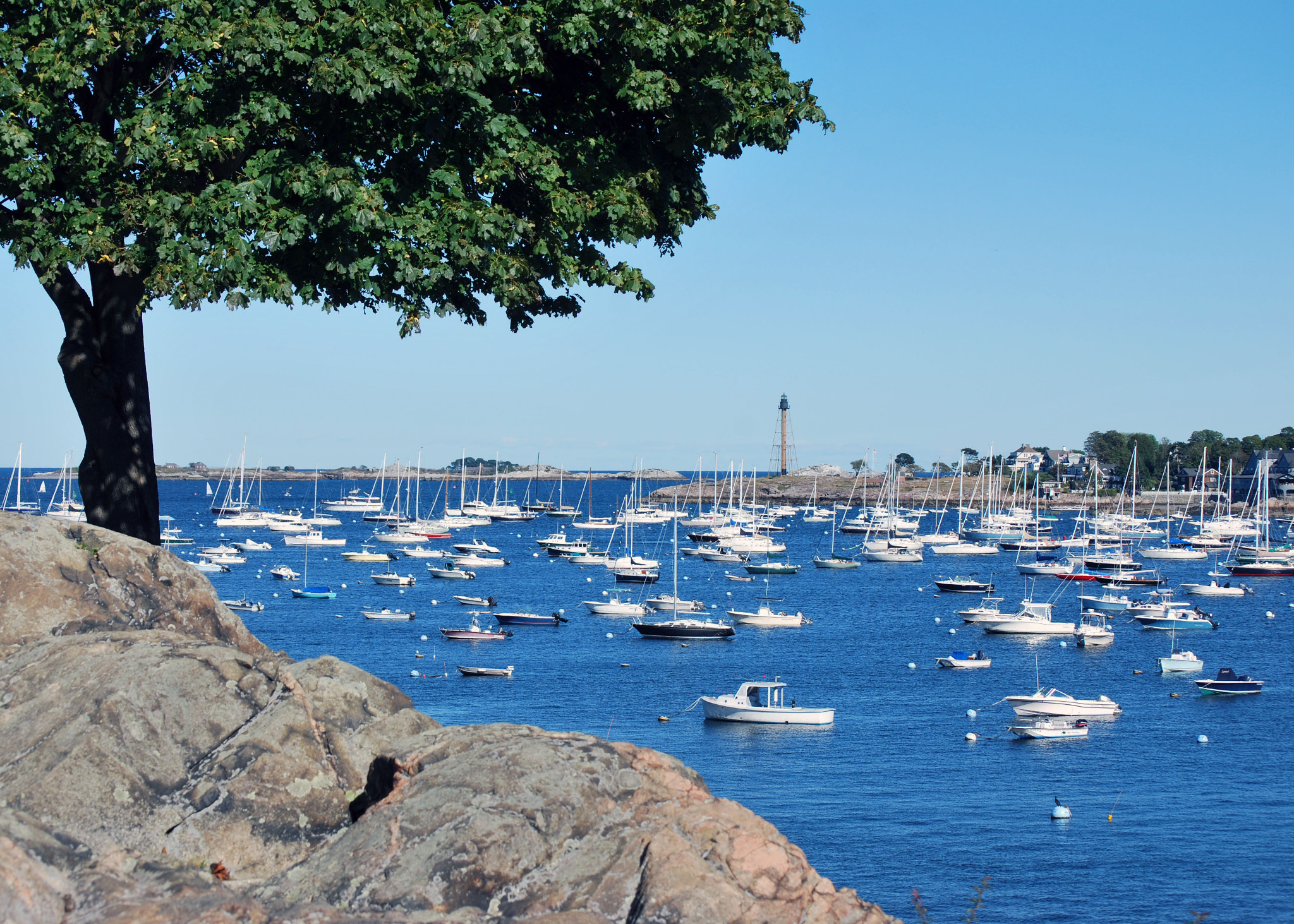
Unlike the lighthouses of Boston, it is possible to reach Marblehead Light by land. It was way too far to walk there from the dock, and so we didn’t, but the idea of a land-based exploration had lodged itself in my head. It took far too long to actually organize it, but last April I finally mounted my bike and set out (this time alone) towards Marblehead Neck.
The happy spring sun was in the sky; the air was thick with pollen. I followed the good old bike path along the Charles River till the end, made my way through townhouses of Charlestown and the industrial wasteland of Everett, and found myself on the relatively new bike path called Northern Strand Community Trail, which led exactly where I needed: up north. It began quite accommodating: wide and paved; then became unpaved; and eventually turned into a narrow informal trail next to abandoned railroad tracks, and led me to cross a river over some very questionable planks. Which is all to say, I got my fair share of fun from that Northern Strand.
The town of Marblehead is a rich Boston suburb situated on a peninsula. A long sandbar extends from it eastward towards a smaller and narrower peninsula called Marblehead Neck. To the right of the Neck lies the Atlantic Ocean; to the left, between the Neck and the rest of the town, is Marblehead Harbor. Our lighthouse proudly stands on the very tip of the Neck, guarding the entrance to the harbor.
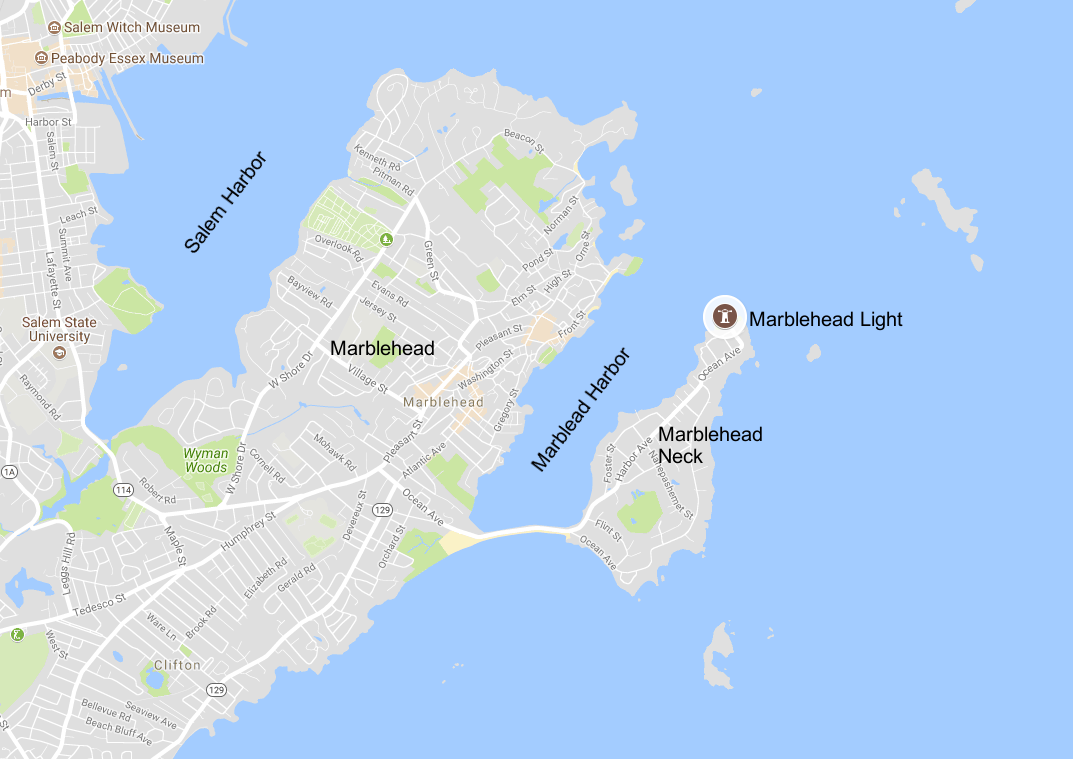
Reaching the sandbar on my bike, I finally got to see Marblehead Harbor. Saw it, — and could not recognize it. Remember the forest of masts in the summer? The were all gone, the harbor looking like a desert now.
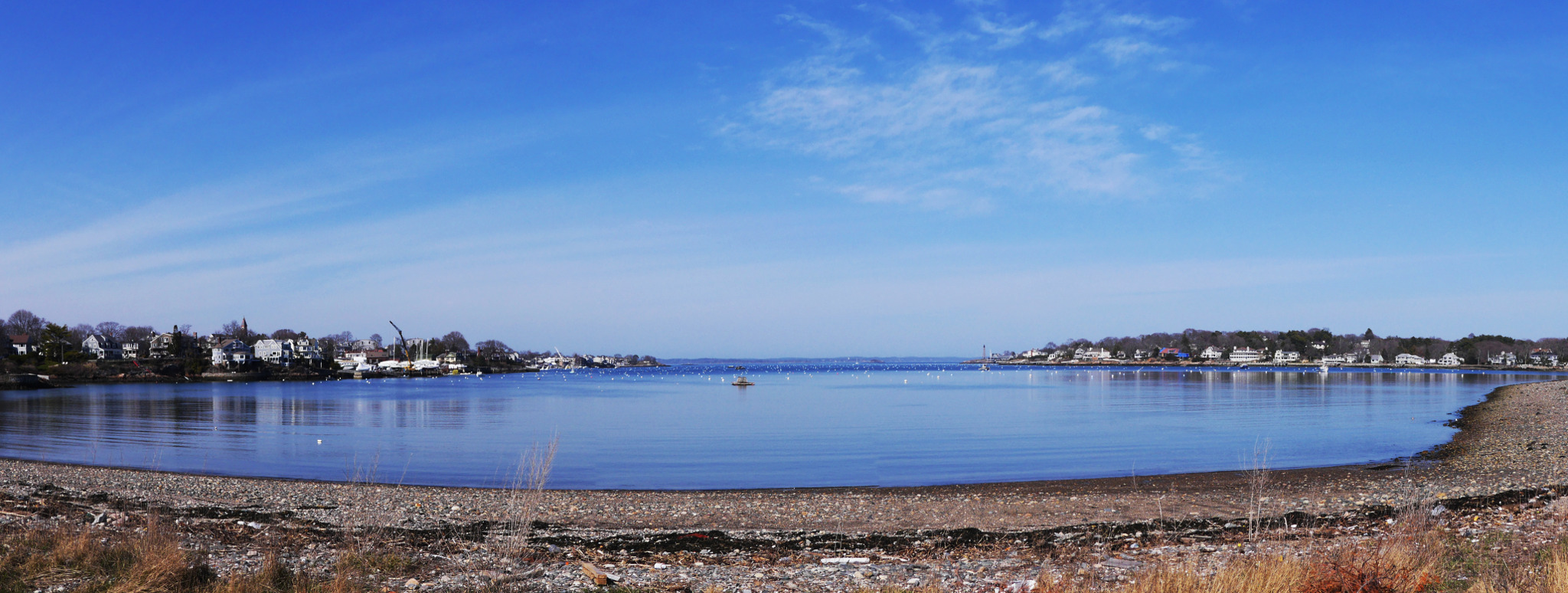
As I was looking at that view, an aching feeling of emptiness appeared in my heart, with a strong longing to fill it with my mast and my sail. Luckily, it was not too long till May 1st, the beginning of the sailing season. So, I looked, and I suffered, and then pushed the pedals and headed finally towards Marblehead Light.
Now it is time to say a few words about the history of the lighthouse. Marblehead Light didn’t start out as that ugly squid, just as the town of Marblehead didn’t start out as a rich suburb and a yacht center. In the first half of the nineteenth century it still was a fishing village, and as such, safe navigation day and night in any weather was critically important to its residents. In 1831 they petitioned the federal government to build a lighthouse at the harbor entrance, and in 1835 the new lighthouse was lighted. That first lighthouse was build in a traditional New England style, and was connected to the keeper’s house with a covered passage. The lantern consisted of ten lamps fueled with whale oil.
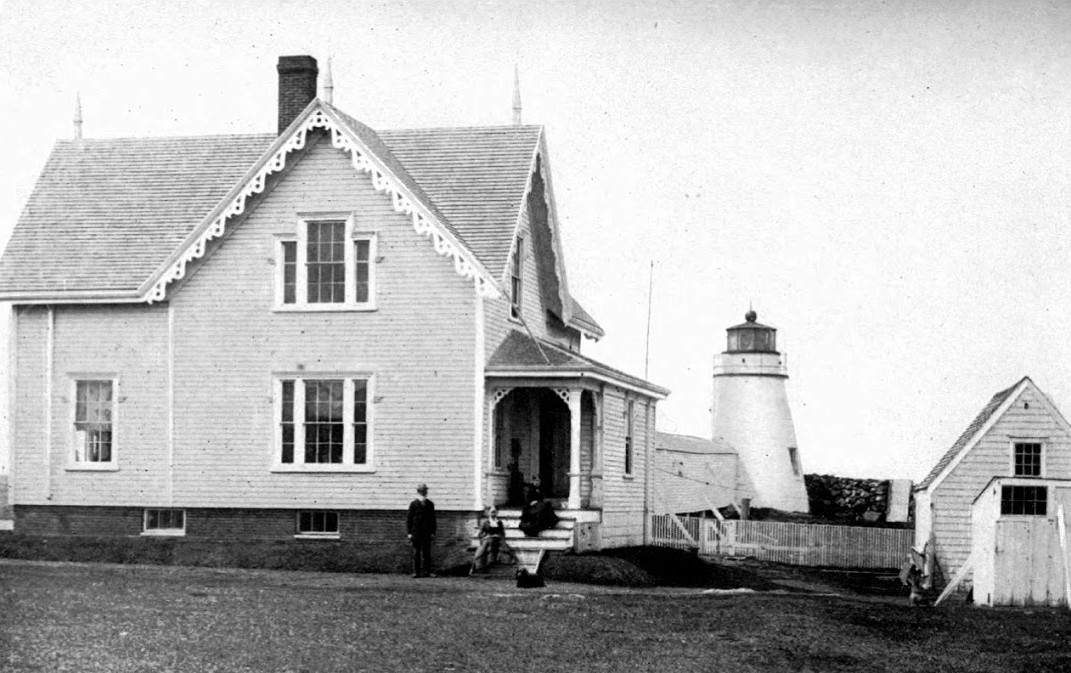
As you can see, that first lighthouse was of rather short stature, and this is where the trouble came. Marblehead itself, and especially the Neck were gaining popularity for summer cottages. The vicinity of the light was getting build up, and was harder and harder to see it behind the cottage. By 1880 the visibility situation became critical. As a quick temporary solution, a hundred foot tall mast was erected next to the lighthouse; the keeper would put an auxiliary on top of it.
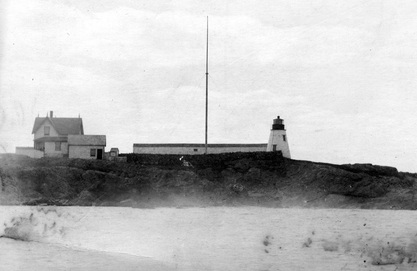
In 1895 the government got around to build a permanent, 105 feet high tower. The initial design called for a brick tower for 45 thousand dollars. What was actually build was a cast iron structure for $8786. I guess that all the explanation of aesthetic issues that we need. Well, it least the cast iron was high quality: the tower stands there till this day.
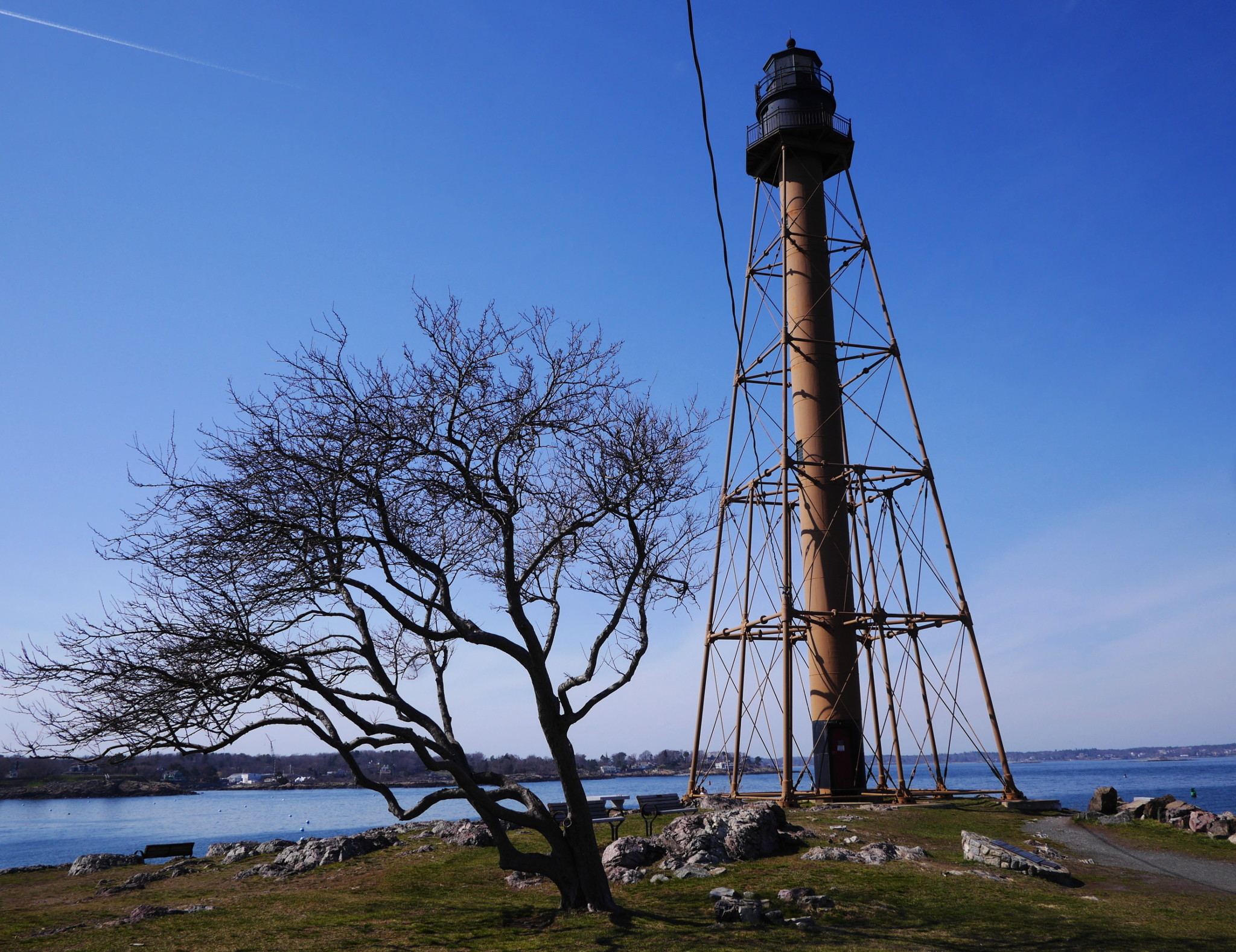
Finally, I have reached the end of Marblehead Neck. The Light is surrounded now by a nice small park, where one can go for a stroll, play soccer, or just sit on a bench and watch the water and the boats. One can also climb granite cliffs down to the water. As the tale goes, the first settlers mistook these granite rocks for marble, and named the town accordingly.
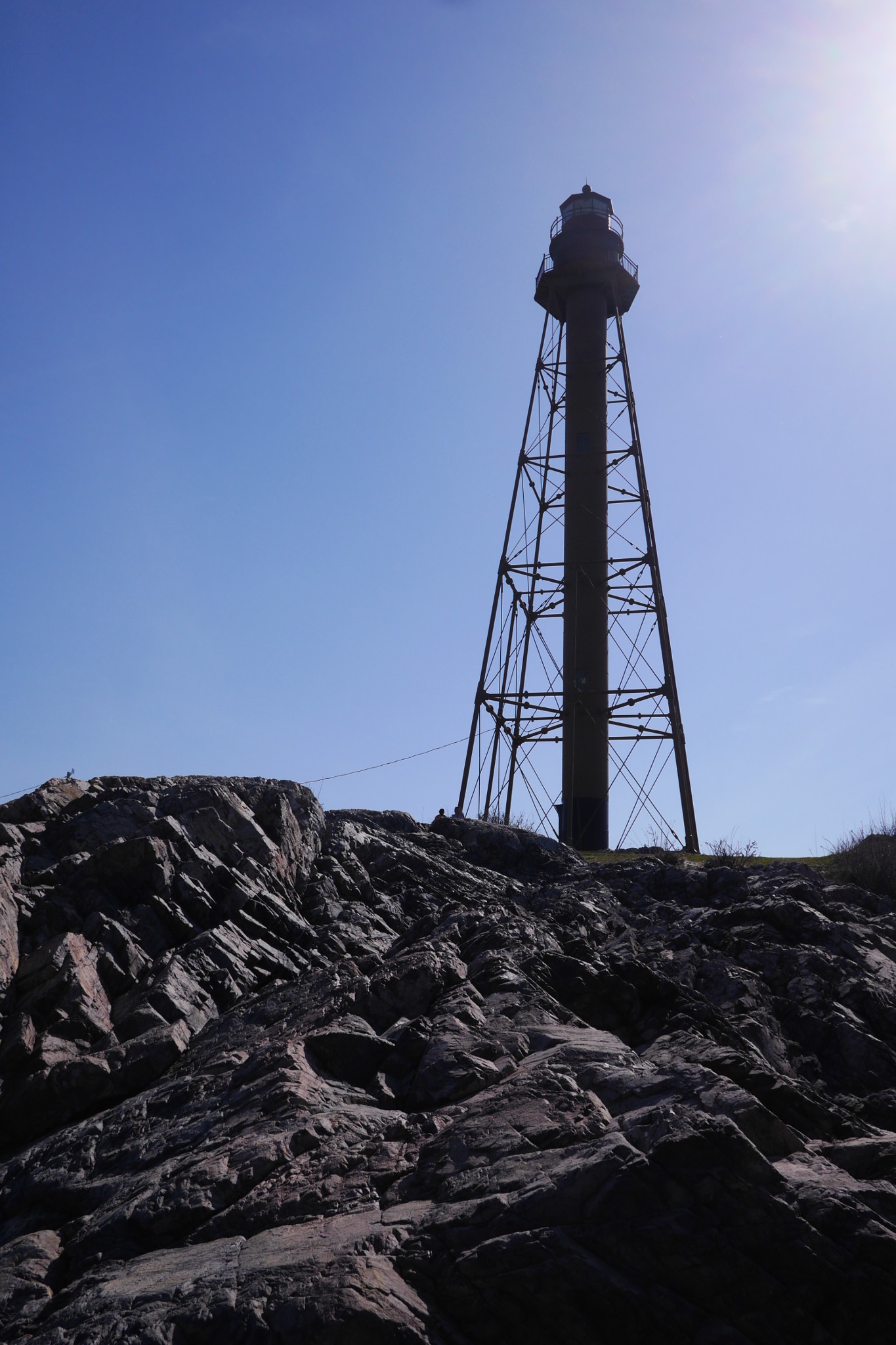
The keeper’s house is no more, but the oil house (a small structure to store the oil for the light) still stands in the park. Unfortunately, somehow it didn’t fit in my photos.
Obviously, I did everything I could: strolled around the park, climbed the cliffs, sat on the bench, looked at the water, wondered at the emptiness of the harbor.
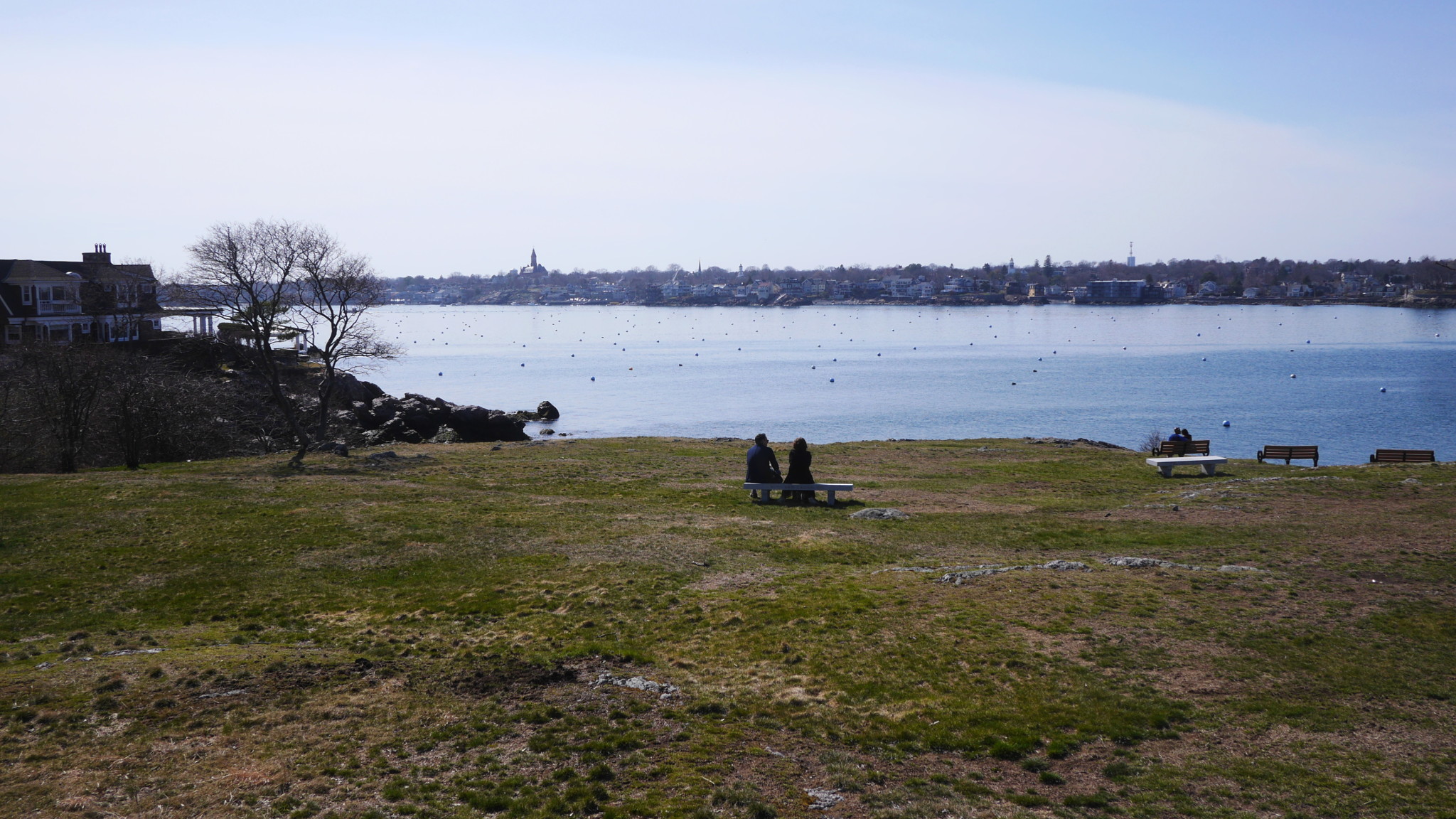
Little dots covering the water on that photo are mooring balls. In season, a boat is tied to each of them. When we stopped here back in August, looking to spend the night, we had to get out of there: all the moorings were taken, not a single one available. And since the mooring balls cover the entire harbor, there was no room to anchor either. We were forced to turn away and try our luck in the nearby Salem.
Which brings us to that trip Sergey and I took in August, with which I am going to conclude this story. Specifically, with its first leg, when we hit a complete calm, bobbed in place for a few hours without making any progress whatsoever, and with a heavy heart turned the engine on and under the diesel power made our way northwards, towards the city of Gloucester. By the time we started it was already very late, and it took us all night to get there. The sky was overcast; no moon, no stars, no wind. Only our boat in the dark, the impenetrable abyss of the ocean to the right, distant shore lights to the left.
Marblehead Light follows an unusual pattern: fixed (non-blinking) green light. The only lighthouse with a fixed light that I’ve encountered. Originally the light was white, but eventually it got changed to green to prevent confusion with shore lights. Thank you very much for that! Otherwise we would be never able to identify it from the water.
Constant green, however, turned out to be easily recognizable. Nothing looks exactly like that on land or out the water. All the time while we could see the Marblehead lighthouse we finally used it the way it was intended: as a guiding light in the dark. In our case, as a sign that we were where we were supposed to be, and making our way towards the destination. The distant green slowly started to fall behind our stern, and it never occurred to me to think about the aesthetic quality of the lighthouse. Instead, I was thinking that since we could see its light, all was good.
Subscribe via RSS